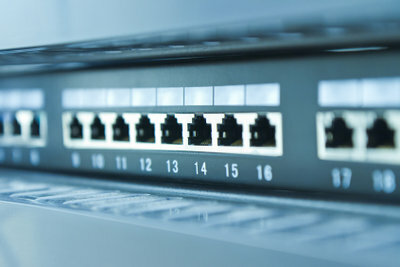Where is the internet stored?
No technology has developed as rapidly in recent years as the Internet. The amount of data that is stored on the Internet is hard to imagine: Google alone processes around 24,000,000 GB of data per day. You can find out what else you should know here.

Backbone: the backbone of the internet
- The backbone of the Internet is what is known as the "backbone". These are the cables and routers that hold a large part of all data in the Internet transport. Perhaps this gives you an impression Map of deep sea cables.
- The amount of data that is transported over the Internet is gigantic: 2415,000,000,000 gigabytes are currently transferred every year. By 2015 this will probably be approx. 1000000000000 gigabytes will increase. For comparison: A piece of music is approximately 0.008 GB in size.
- The main way of data transmission is glass fiber, which has an almost unlimited bandwidth. However, the bandwidth of the machines that send and receive data on both sides is limited. A large number of signals are transmitted through each optical fiber at any time. There is a trick to this: each signal is sent with light of a different wavelength. At the receiving station, this signal is then separated again using optical devices such as prisms or grids and sent to different machines. This so-called multiplexing increases the maximum achievable bandwidth of the glass fiber.
- From the backbone, the Internet quickly branches through the whole world to almost every front door. Cellular antennas are also connected to the Internet and are therefore part of the network.
Server - this is where the data is stored
- Every computer connected to the internet is a part of it. Smartphones are also included. Each of these computers is able to provide services on the Internet - these are also called "servers".
- However, normal computers, including smartphones, are far too slow to handle the large amounts of data generated by a website such as Helpster. This is done by special computers, also called "servers". A large website doesn't just consist of a server: Google found out through data analysis that the average website is composed of twelve different sources. This is because servers specialize in exactly one task. Some are good at generating the website, others - so-called file servers - store gigantic amounts of data and deliver, for example pictures or videos.
- Particularly large sites like Google, YouTube or Facebook have hundreds of thousands of servers worldwide. The estimates in the case of Google vary between over a million and 900,000 servers. The total electricity requirement of Google is 200 megawatts. That is roughly as much electricity as a hydropower plant generates. The combined electricity consumption of all data centers is around 2% of the electricity generated worldwide.
- The geographical position of the server is irrelevant: no matter where the data is stored: there all Servers connected to each other can quickly transfer data from anywhere in the world to any other point will.
How is the internet structured technically?
The Internet is used every day to conveniently collect information from all over the world in front of ...
TCP is the internet protocol
- Computers speak different languages. Each language has its own peculiarities and fixed manners. Some things can only be expressed in particular languages. These languages are called protocols.
- The Internet protocol is TCP / IP. It expresses data in the form of packets. You can think of this as a normal postal package: It has a content, a recipient and sender address, information on handling and sometimes, e.g. B. when your bank sends you a package, the contents are securely sealed.
- Once sent, these packets pass through a variety of stations. Each of these stations reads the information printed on the package and, if it is a particularly curious station, also the content, if it is not sealed. The station then decides how urgent the package is and which is the best way to get to its destination. This is repeated until the package has reached the destination address. You can understand this by pressing Windows key + R and entering "cmd". In the window that now opens, type "tracert www.google.de" without the quotation marks and confirm with Enter. After a while, each individual station will be displayed.
- Since humans can access the addresses that the Internet uses, such as 172.0.0.1 or 0: 0: 0: 0: 0: 0: 0: 1 can hardly remember, the Internet has address books, which are DNS servers to name. These have saved which URL, such as "helpster.de", belongs to which IP address.
- So if you type in "helpster.de" in your web browser, your computer asks the DNS server for the actual address and then tries to establish a connection. After the connection has been established, your computer sends what exactly it actually wants to see. A Helpster server then instructs all other Helpster servers to provide you with all the information.
How helpful do you find this article?



